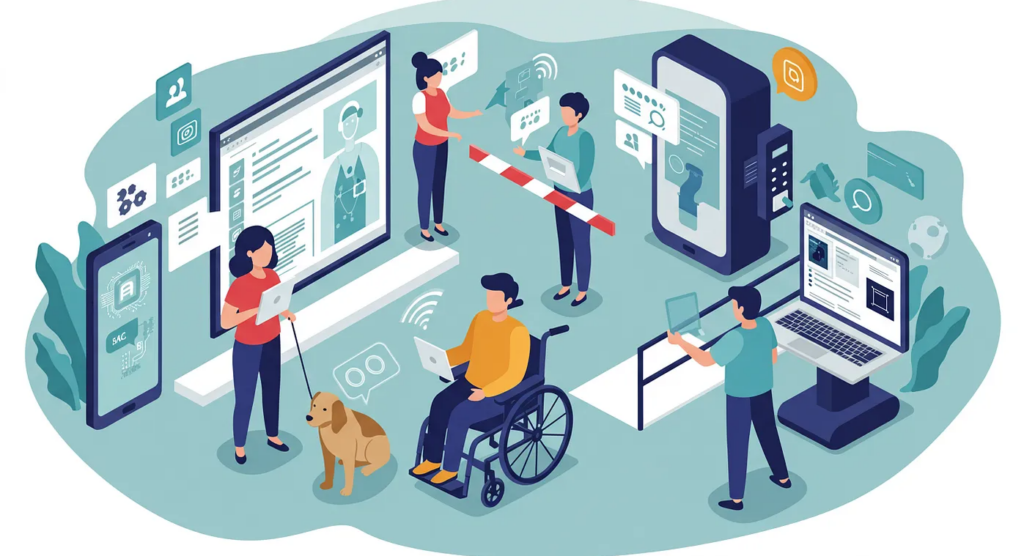

In today’s digital age, artificial intelligence (AI) and its innovative branch — generative AI — are not only transforming industries such as business and education but are also fundamentally reshaping accessibility and inclusivity for people with disabilities. By breaking down longstanding barriers, these technologies are empowering individuals to communicate more effectively, access vital information, and participate fully in society.
A New Era of Digital Empowerment
AI-driven innovations are redefining everyday life. Advanced tools like speech-to-text systems, real-time captioning, and smart prosthetics are enabling individuals with disabilities to overcome obstacles that once limited their independence. According to a recent study discussed in an academic paper on generative AI, models like GPT-4 can generate context-aware descriptions that give blind and low-vision users a richer understanding of their surroundings
Similarly, platforms such as Be My Eyes connect blind users with millions of sighted volunteers worldwide, fostering not only independence but also a global community of support — an initiative widely recognized for its impact, as noted by numerous media outlets including Forbes
Real-world Innovations in Accessibility
Assistive Communication:
Leading tech companies are developing AI-powered applications that convert on-screen text into spoken words. For instance, Microsoft’s Seeing AI and Apple’s VoiceOver help visually impaired users access digital content. Furthermore, generative AI is now being used to create dynamic, context-sensitive image descriptions. According to research highlighted by McKinsey, such innovations can transform the way visually impaired individuals engage with their environment.
Collaborative Ventures:
In a groundbreaking collaboration, Microsoft and Be My Eyes have partnered to enhance AI models for better serving blind and low-vision users. As reported by Forbes, this alliance aims to refine the technology’s ability to understand and address the unique needs of these users, thereby setting new standards for inclusive design
Educational Transformation:
AI is revolutionizing the educational experience for students with disabilities. Customized tutoring programs, real-time transcription, and word prediction tools have helped students with dyslexia — such as Makenzie Gilkison, who has been featured in AP reports — excel academically despite their challenges. According to an AP article, these tools transform complex tasks into manageable ones, thereby leveling the playing field for students who might otherwise struggle
Workplace Inclusion:
AI is also making strides in creating inclusive workplaces. Adaptive interfaces and smart devices, such as AI-enhanced virtual assistants and autonomous mobility aids, are fostering work environments that accommodate diverse needs. Financial News has documented how senior disabled professionals in sectors like finance are advocating for greater accessibility and representation, underscoring the role of AI in opening new career opportunities
Tangible Benefits of Inclusive AI
The benefits of these AI-driven solutions are wide-ranging:
- Enhanced Communication:
Advanced speech recognition and natural language processing tools enable individuals with speech or hearing impairments to interact seamlessly. According to PwC’s Global Artificial Intelligence Study, such tools not only facilitate communication but also help in overcoming everyday barriers. - Improved Access to Information and Education:
Adaptive learning platforms powered by AI provide personalized educational experiences that cater to each student’s unique needs, ensuring equitable access to knowledge. The U.S. National Science Foundation and educational research highlight how these innovations are crucial for students with disabilities. - Increased Employment Opportunities:
By enabling workplace adjustments — ranging from AI-enhanced virtual support to adaptive interfaces — AI helps create environments where individuals with disabilities can thrive. Research from the IMF indicates that leveraging AI could significantly boost productivity and employment opportunities in inclusive work settings. - Greater Independence and Autonomy:
Smart devices and assistive technologies such as autonomous mobility aids and AI-enhanced prosthetics provide the tools necessary for individuals to manage daily tasks independently. This increased autonomy is echoed in various industry reports and academic studies.



 Next Post
Next Post